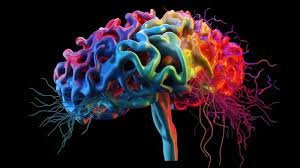
On Being and Making Artwork
Our Bodies Hold the Space for Our Experiences
Of the most valuable things I’ve learned, is that artwork is physical and it manifests from the body. It simply does not exist without being informed by our bodies. And our bodies hold the space for all of our experiences. The way our body is shaped and perceived by others informs our worldview.
One of the main essences I am tasked with as a teacher is to hold space for each student – and this is a part of why I prefer private lessons to group classes- so that their body can be present in the lesson and perform the skill I am asking of them. This means addressing the whole person. Sometimes that means the skill acquisition is less important in that moment if a stressor/incident/trauma/concern is present. Often times when that is given space and due attention, it dissipates, and skill acquisition can resume. Sometimes it needs our attention for longer.

The Energy of Drawing
"Feeling overwhelmed by the hustle of the season? Discover the meditative power of drawing. Slow down, calm your mind, and reconnect with the present moment through simple, peaceful creativity. Learn how to overcome distractions and embrace stillness in your drawing practice, even during the busiest times of the year."

"Tweaking Is Essential to the Drawing Process" (If Steve Jobs Did It, Why Won't You?)
A form of "analysis paralysis" I see my adult drawing students commonly put themselves through is the idea that they have to get something drawn correctly the first time they draw it. This drive for perfection straight out of the gate is horrible for our self-esteem, especially when we're faced with a task we have not yet mastered! I often remind students that they don't know how to imagine the perfect drawing in their head because they have to use their fine motor skills to actually execute the drawing. Fine motor skills are a factor within their control, but more often than not those skills are underdeveloped in adulthood. Because of that, the moving of the hand is a game changer- you can't just "picture it" and be done! And if you're like most of us, you need to be prepared for making adjustments.

Overthinking Could Suffocate Your Drawing Practice
Nike said it best: Just Do It. Overthinking your drawing process slows progress and stifles creativity. Drawing is about connecting your hands, eyes, and brain—not overanalyzing every line.
Studies show that interrupting your brain’s overactive thought process can boost creativity and memory. Yet, adults often hesitate, fearing mistakes. But mistakes are how we grow!
The key? Let go of perfection. Play, fail, and draw without judgment. Grab a pencil and start—because the only thing holding you back is your own overthinking.
Ready to unlock your potential? Start today!

Making Art Is Good for Your Brain
Making art isn’t just a creative outlet—it’s a brain booster! Recent studies are now backing up what many of us have known intuitively for years: creating art enhances brain function. Whether you're a youngster, an older adult, or somewhere in between, the process of making art has positive cognitive effects. A study focused on newly retired individuals (ages 62-70) found that engaging in art-making can delay or even reverse age-related cognitive decline. In contrast, simply learning about art through appreciation showed no such benefits. The key lies in the active "doing" of art, which engages your hands, eyes, and brain in complex ways. This form of global thinking helps improve cognitive function by combining small details with the big picture. Don't just read about it—get your hands in the paint, and boost your brain!

Visual Problem Solving Tricks: A Moving Pencil = Access to New Solutions
Doodling isn't just for fun—it's a proven way to boost focus, comprehension, and memory retention. Studies show that doodling helps prevent daydreaming, keeping the mind engaged and aiding in the absorption of new information. Handwritten notes, especially when paired with doodles, improve retention and help individuals better reconstruct learned concepts over time.
Next time you or your child need a mental reset, encourage doodling. It’s a simple yet effective way to improve learning and productivity.

Increased Neural Matter? Yes, Please!
Drawing isn’t just for artists—it's a brain-boosting activity that enhances visual imagery, fine motor skills, and procedural memory. Studies show that artists have more neural matter in key areas of the brain, confirming what I've observed for years: drawing strengthens problem-solving abilities. Procedural memory, the brain’s "how-to" memory, plays a vital role in daily tasks and learning new skills. At LZM Studio, drawing helps both kids and adults improve cognitive function, creativity, and real-world problem-solving. Drawing exercises both sides of the brain, making it a powerful tool for development in school, work, and life.

Will Learning to Draw as a Child Change Your Brain as an Adult?
Many wonder if learning to draw as a child can change your brain as an adult. From my experience teaching kids, I can confidently say it does. Drawing helps children see the world differently, creating lasting cognitive changes.
A Northwestern University study shows that childhood music lessons result in long-term brain changes in adults. Could drawing have a similar impact? It’s a question worth exploring!
Want to Learn More?
Read the study on childhood learning and its effects on adult brain function. Click here to explore!
